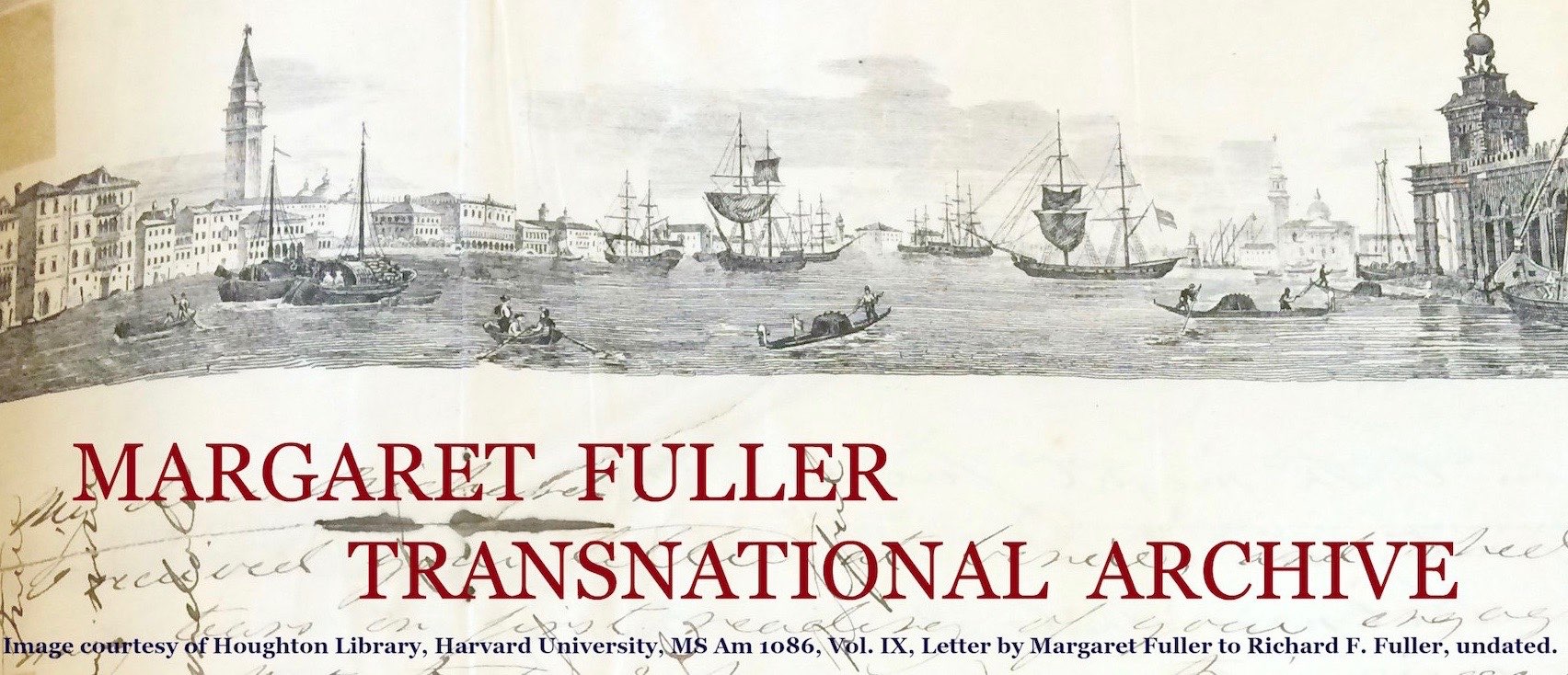Fuller in Rome
View Fullscreen“The struggle is now fairly, thoroughly commenced between the principle of Democracy and the old powers, no longer legitimate.” So begins Margaret Fuller’s Things and Thoughts in Europe, No. XXX, written from Rome on May 27, 1849. In this article, Fuller confronts the realities of the revolution, from the physical destruction of Rome to the suffering of the wounded. She starts by listing the latest developments, such as the defeat of the French by a Roman/Lombard army. General Oudinot heads the French army and Fuller expresses distrust not only of the French military, but the French people as a whole. Additionally, the armies of Naples have been driven back by Garibaldi and talk swirls about the advancement of the Austrian army .
Fuller discusses at length the ways in which corruption in Italy and elsewhere has driven the Italian people further left. Previously, the people of Italy would’ve been satisfied with limited monarchies and constitutional governments and still maintained an “attachment to the dogmas and ritual of the Catholic Church.” Yet given the “triple treachery” of Charles Albert, the “cowardly and false” Leopold of Tuscany, and the “imbecile” Louis Bonaparte, among others, the Italian people have become increasingly radical. The Italians have also moved away from traditional Catholicism in their repudiation of the old system, one that Fuller views as no longer viable. Instead, she argues that given the radical nature of the revolution, it will not stop until Italy is independent and united as a republic. Furthermore, she predicts that within the next century, all of Europe will be under Republican government.
Fuller moves on to relate the material and physical costs of the revolution, discussing her experiences with death as she attends to the wounded . Many of the men are university students and Fuller sympathizes with their suffering. Her work at the hospital is closely tied to her relationship with Princess Cristina di Belgiojoso, a woman known in France as “la belle joyeuse” or “the beautiful joyous,” because of her audacity. Fuller provides a brief biographical sketch of Belgiojoso , admiringly identifying her as one of the few “noblesse” who truly understood the course of events and supported the Republican movement. Belgiojoso opened the hospitals for the wounded revolutionaries, publishing invitations to the Roman women urging them to make bandages and contribute their services. After meeting Fuller in January 1848, Belgiojoso wrote to Fuller, asking for her assistance in running the hospitals. Given that the Austrians had seized her funds, Belgiojoso also had to procure funds for the hospitals, which she first did by organizing other women who joined her in veiling themselves and begging for money. Voluntary contributions began to come in soon after. Fuller concludes her article by calling on other countries, and in particular, America, to come to the aid of the Italian revolutionaries, ending with a foreboding, “Beware!” to those who offer no assistance.
Written by Sarah Payne
